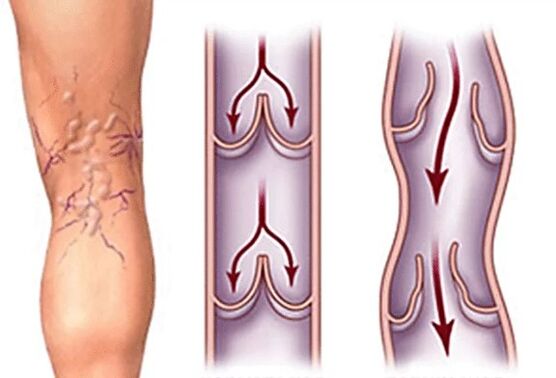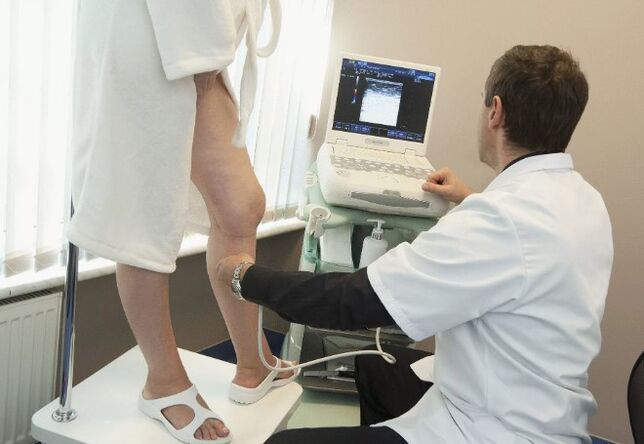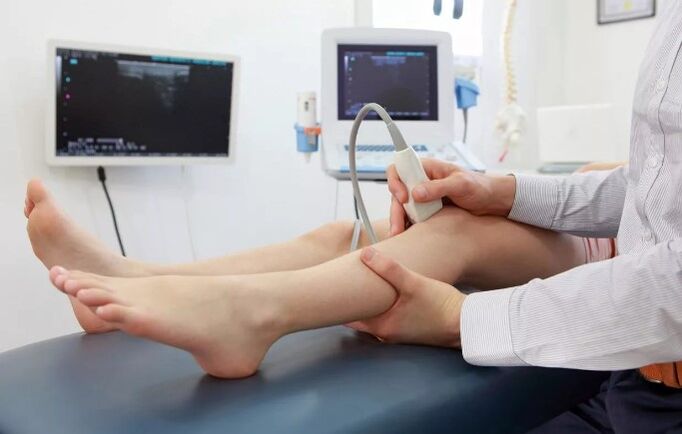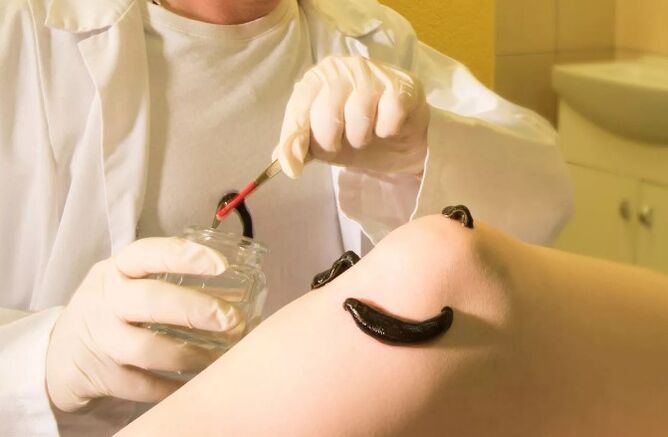Vascular disease is a fairly common phenomenon and can occur to everyone. Like many other diseases, varicose veins have their own stages, and if the initial pathological manifestations are more common to discomfort, the final stage is dangerous not only to health, but also to human life. To avoid serious consequences, such as disability and other consequences, it is necessary to understand the main characteristics of varicose vein manifestations, their development and methods to prevent their complications.

The concept of varicose veins
Varicocele is a disease that affects the muscles and connective tissue layers of blood vessel walls and their valve devices. As a result, the veins expand, and the blood circulates in this place, and the blood flows backwards through the blood vessels.
Most people know about varicose veins on their feet. However, the disease has other limitations, as the blood vessel can be affected anywhere in the body.
Most commonly, in medical practice, varicose veins in the pelvic organs (bladder, uterus), vagina (shortum, rectum, vagina) are diagnosed. However, the clinical condition of the disease depends on the location of the damage and the pathological stage.
Varicocele veins in men and their characteristics
At a young age (on average, 10 to 12 years old), a young person may experience diseases such as scrotal veins and varicose veins.In science, this state is called "varicose veins".It can be found during a simple examination and palpation of the scrotum. Clinically, varicose veins are manifested in many symptoms, including:
- Pain on the side or half of the affected scrotum will be exacerbated after physical exercise;
- severity of testicles;
- Infertility.
However, it is often possible that one can’t show one’s own performance at all and is determined by chance in a planning check.
This disease distinguishes three stages:
- Slight swelling of the veins, which can be seen when the patient performs Valsalva samples (tension);
- The veins are visible and palpated in a calm state of the patient;
- The ships changed drastically, convincingly, and filled with blood. The size of the testicles in the disease-affected areas is reduced, with test consistency.
In adult patients, varicose veins in the scrotum are often diagnosed to treat the inability of the doctor to have children. There is a theory that affects fertility (the ability to reproduce offspring) by increasing the temperature inside the scrotum, which adversely affects testicle and spermgenesis. Additionally, this type of male varicose veins is often combined with damage to blood vessels on the legs.

Diagnosing a disease is simple.As mentioned earlier, you can suspect varicose veins in the scrotum during normal examinations and then an ultrasound study of the vascular bundle should be performed to confirm. As a treatment method, only surgical intervention is used: the doctor simply tied the varicose veins and performed blood circulation according to anastomosis. However, it should be remembered that, like varicose veins, this surgery is not guaranteed to be a complete cure. Furthermore, in many cases, this disease occurs frequently.
Characteristics of varicose veins in women
Pelvic varicose veins.For women, this disease is a risk of fetal inconsistency. As mentioned above, varicose veins can occur anywhere in the human body, including the pelvic area. During pregnancy, the situation worsens because first, as the fetus grows, blood vessels in the abdominal cavity are stretched, and secondly, the increase in the size of the uterus puts pressure on them. Due to these processes, the blood circulation of the placenta is disturbed, which may lead to its repulsion. Of course, in this case, the possibility of losing a child is greatly increased.
Sometimes it debuts varicose veins during pregnancy.Before conception, a woman cannot doubt that she is inclined to get sick. However, during fetal carrying, the woman's body is subject to changes in certain diseases that may cause certain diseases, including varicose veins. Such changes include:
- Change the hormonal background;
- Weight gain;
- Anatomical changes.
Furthermore, the number of births is directly proportional to the subsequent pathological risk. In addition to pelvic varicose veins, other complications can occur during pregnancy:
- uterine veins rupture during childbirth;
- thrombocytosis;
- Dermatitis, nutritional ulcers;
- Vein deficiency.
Therefore, unfortunately, pregnancy is a factor that can cause varicose veins, as it contributes to faster pathological development and requires certain diagnostic precautions.
Other consequences of varicose veins
Platelet mass.Usually, varicose veins and venous deficiency can cause inflammation of the blood vessel wall - phlebitis, which can form with blood clots - thrombus. Basically, this disease affects blood vessels in the lower limbs, so patients complain about severe pain in the affected areas of the legs. Noted the symptoms of general inflammatory reactions: high temperature, weakness. If treatment is not started on time, the process applies to other veins and the patient's condition will worsen.

Thromboembolism.In the presence of platelets and varicose veins, there is a risk of serious complications - thromboembolism. This occurs due to the separation of blood clots from the walls of blood vessels, and then the blockage of the trunk that nourishes the heart, light and the brain.
Initially, for example, a blood clot can be on the legs (which is the most common). However, starting from the lower limbs, it is forced to flow through the blood to various parts of the body. As a result, falling into smaller branches of the vascular system, the clots can cause collapse, so blood circulation at that site is disturbed by the appearance of ischemia, followed by necrosis. Clinically, this is manifested by a heart attack, stroke, or lung and fat (pulmonary thromboembolism), which usually terminates death.
Treatment for patients who are only in intensive care and intensive care units for this diagnosis. In this case, measures to help the patient should be taken immediately - only in this case, the patient has a chance of redemption.
dermatitis.In most cases, this unpleasant complication occurs on the inner surface of the lower leg and manifests as many symptoms, including:
- Thin skin;
- epidermal pigmentation;
- itching in affected areas;
- The appearance of air bubbles tends to "open", which leads to layering of the skin;
- Violating sensitivity of affected areas.
Dermatitis does not heal well and is almost incurable. The presence of a thrombus requires the occurrence of nutritional ulcers - the part of the skin that dies. In the future, infections may add ulcers, from which purulent wounds may appear.
Remote provocation.This beauty defect that looks like a blood vessel "star" is the result of rupture of small capillaries and a sign of the initial stage of varicose veins.
hemorrhoid.This is a very common disease - nothing more than varicose veins in the rectum. Its appearance shows the appearance of SO called hemorrhoid lymph nodes, which are usually able to go out, rupture and inflammation. This has attracted great attention from the patients.
Diagnostic method

The easiest and most affordable way to detect varicose veins and their complications is the ultrasound Doppler vein of the lower limbs. During the course of this study, the condition of blood flow, blood vessels and the entire wall was evaluated. Therefore, the above diagnosis helps detect blood clots. In addition, all patients with varicose veins must pass Doppler through Doppler before any surgical intervention to rule out the presence of blood clots to avoid complications.
In the case of suspected venous deficiency or thrombosis in the patient, doctors recommend X-ray contrast venous relief (a method to evaluate venous work).
To do this, a special serum - albumin is introduced into the vessel and then taken X-rays will register the impulse from the veins. Then evaluate the results.
You can check it by computed tomography and the military torso. This method is the most accurate but more expensive method. However, this diagnostic approach allows not only identification of vascular disease, but also assesses the status of other body systems and tissues.
Treatment of complications
Treatment of varicose consequences depends on the patient's current status and the type of direct complications. Therefore, platelet quality requires prescription blood aging, anti-inflammatory drugs, antibiotics, painkillers. As the inflammation process subsides, physical therapy, rest therapy (treatment with water ches) is recommended. Operations can be proposed as a supportive treatment - ligation and vein removal.
Nutritional ulcers are not well treated.The surgeon removes the necrotic area and prescribes dressings with preservatives and ointments. Adding to these manipulations, Vienna was subjected to antibacterial treatment and blood flow.
Vascular stars are eliminated by sclerotherapy, i. e. , So``glue'' in the venous cavity. After the operation, compressed flax was used to prevent recurrence.
Other complications, such as hemorrhoids, varicose veins and pelvic veins, can only be cured by surgery after a thorough examination and identified the affected veins.
Forecast

In the case of pulmonary arterial thromboembolic, an adverse prognosis was observed, with 75% of deaths reaching. Similarly, thrombophlebitis in skin nutritional diseases has non-feeding characteristics because the vascular changes occur continuously in the disease and the risk of infection is also increased, which can lead to many complications. The consequences of this disease usually lead to the patient's illness.
Instructions for patients with disabilities are:
- The presence of thrombosis and metastatic thromboembolism;
- Recurrent Erysipelas;
- Postperiosteal ossification syndrome;
- Ineffective surgical treatment.
Most commonly, patients in the final stages of varicose veins have disabilities and persistent impaired performance.























